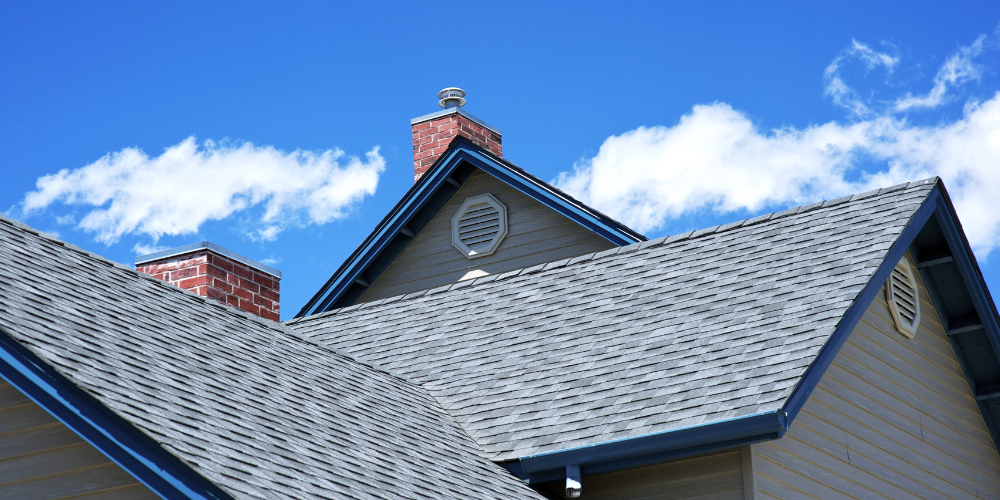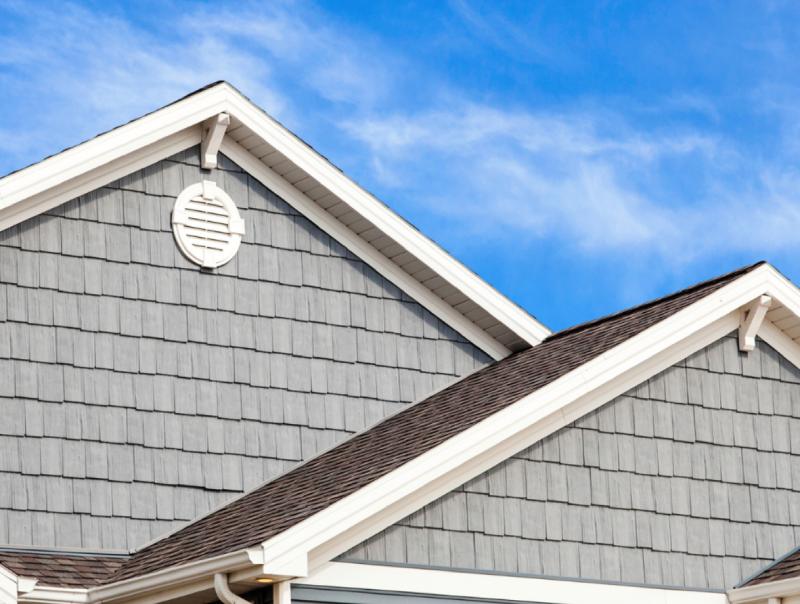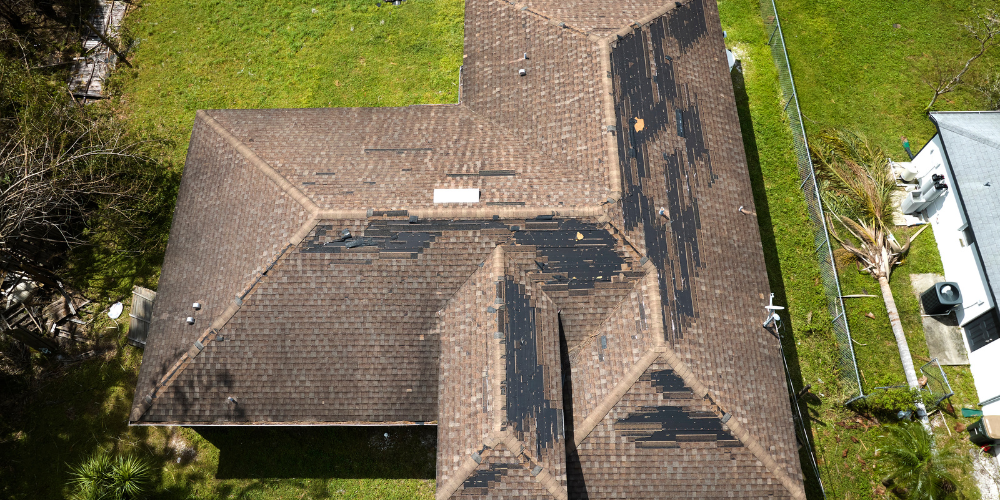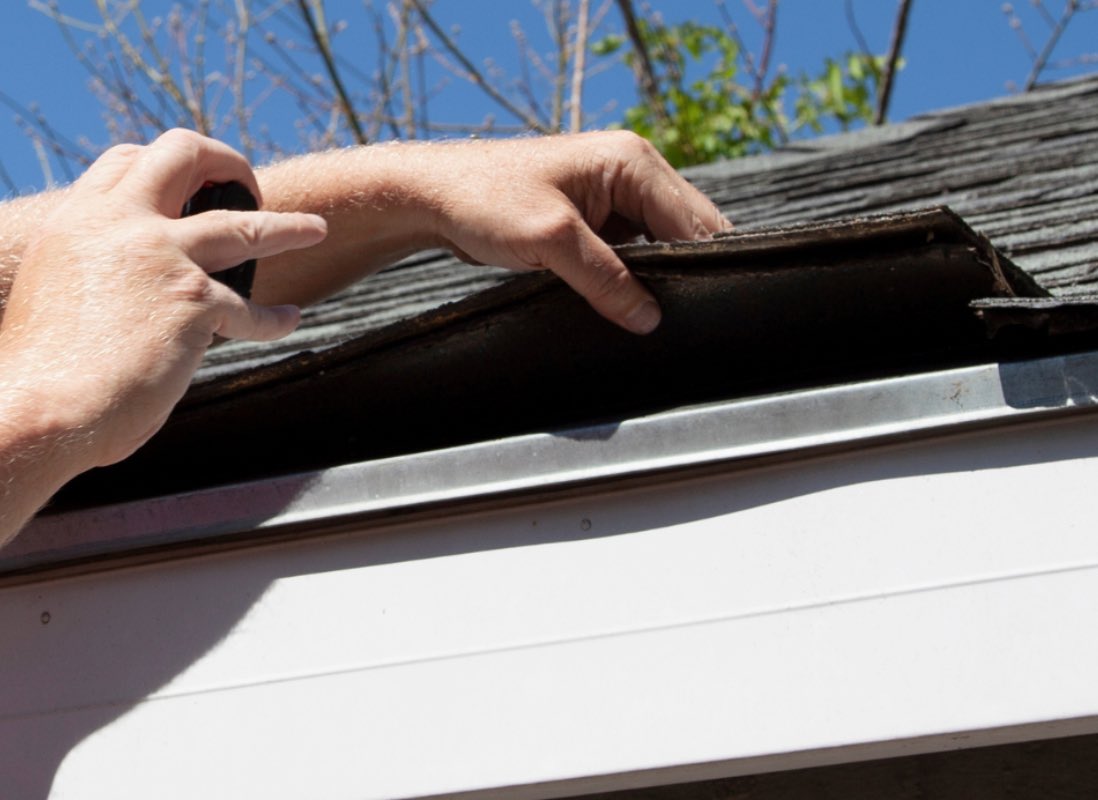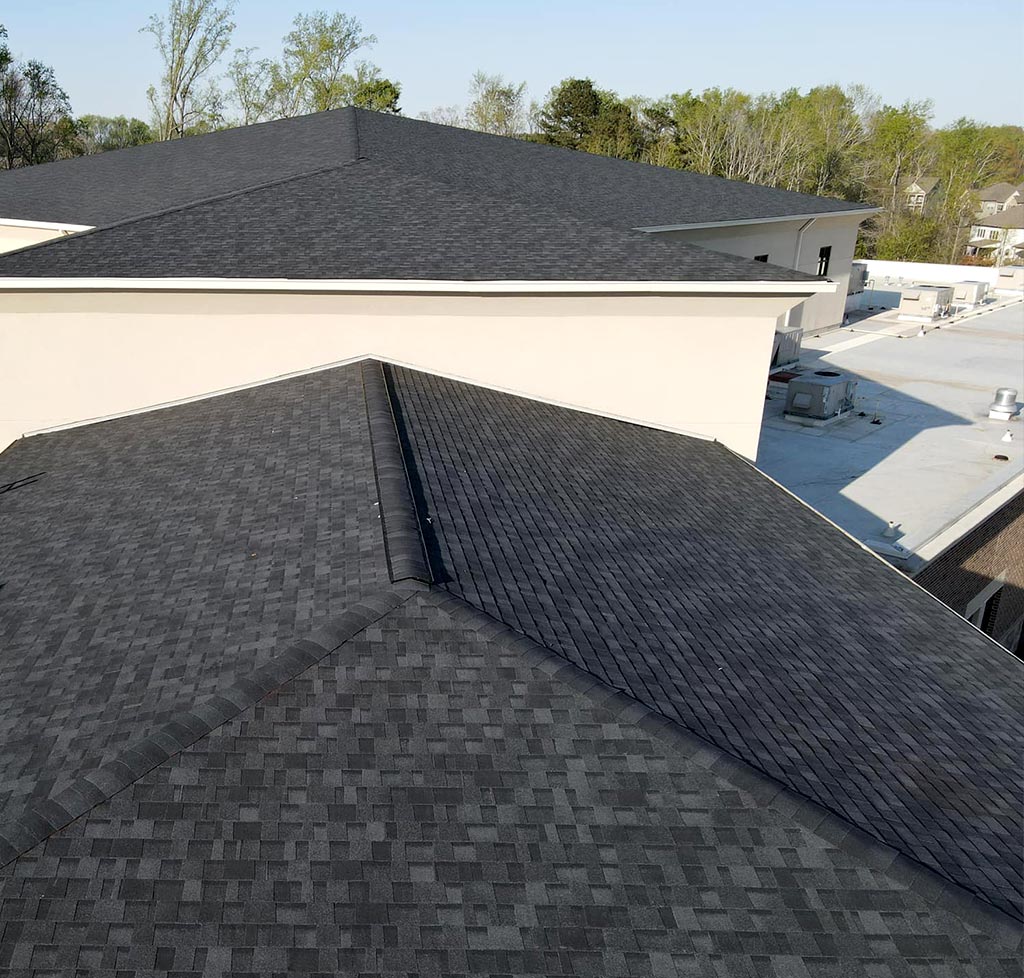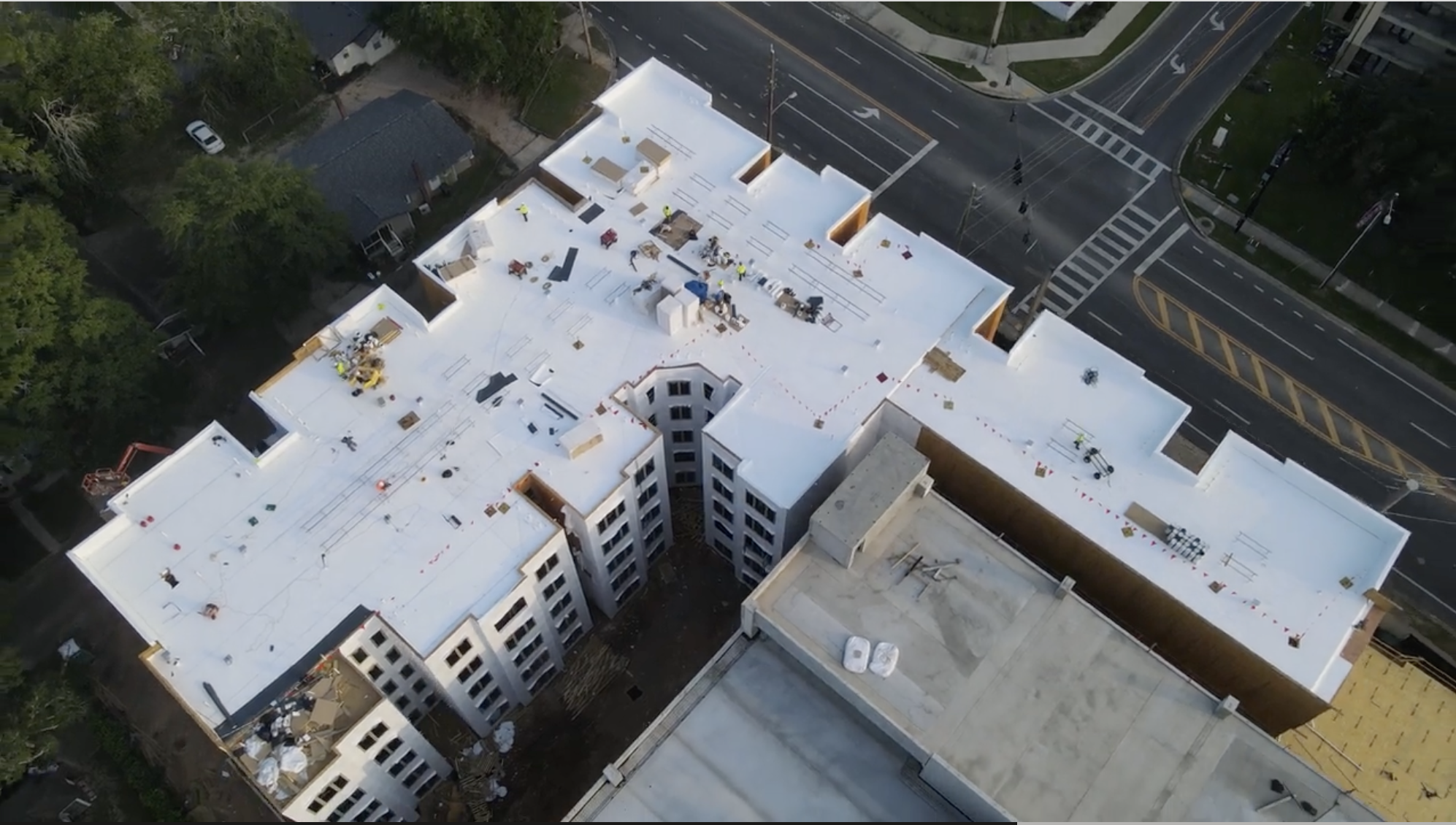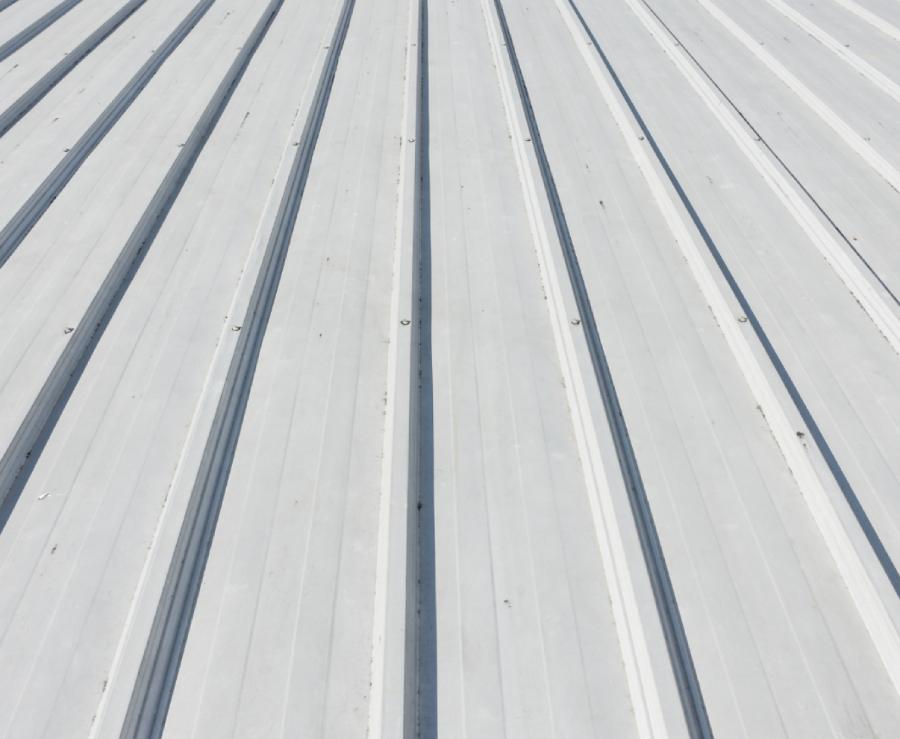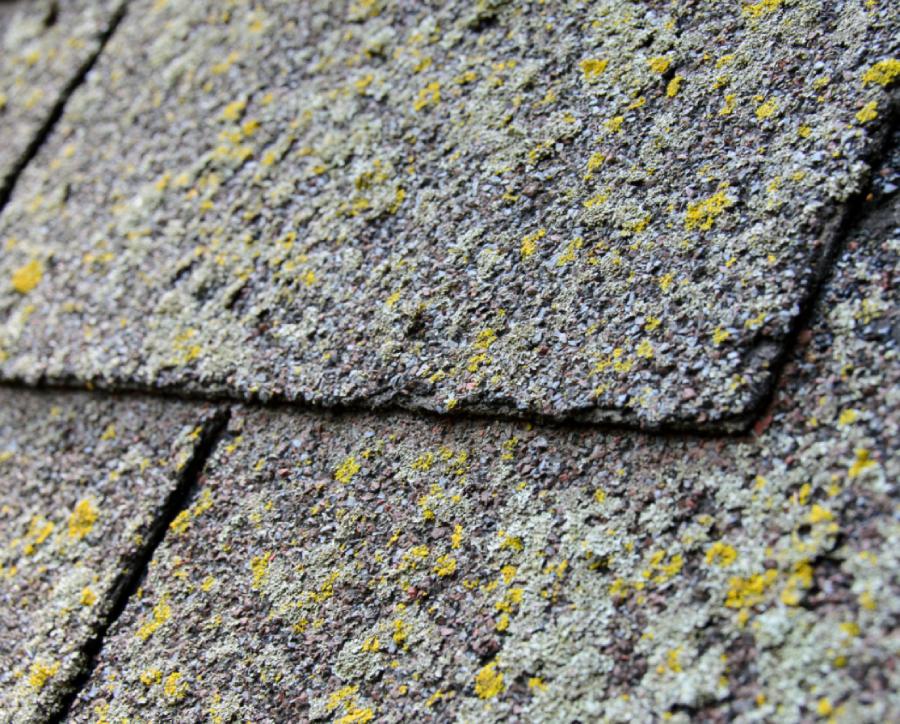Roof Ventilation and Insulation: How to Keep Your Home Energy Efficient Year-Round
Introduction
Your roof plays a much bigger role than simply protecting your home from the elements — it directly affects your energy bills, indoor comfort, and even the lifespan of the roofing materials. Proper roof ventilation and insulation work together to regulate temperature, manage moisture, and keep your home energy efficient throughout every season.
Here’s why these two elements matter, how they work, and what you can do to ensure your home stays comfortable year-round.
1. Why Roof Ventilation Matters
Roof ventilation allows fresh air to circulate through your attic, preventing heat and moisture from becoming trapped. Without proper airflow, your roof and attic can experience a range of problems — especially in Georgia’s hot, humid climate.
Key Benefits of Proper Roof Ventilation
- Reduces heat buildup in the attic during summer
- Helps lower cooling costs by reducing strain on your HVAC system
- Prevents excess moisture that can lead to mold, mildew, and wood rot
- Extends roof life by reducing shingle warping and underlayment deterioration
- Balances indoor temperature, reducing hot spots in the home
High attic temperatures can reach 150°F+ in Georgia summers. Proper ventilation helps your roof and cooling system work much more efficiently.
2. How Roof Ventilation Works
Ventilation systems use two types of vents to create airflow:
Intake Vents (usually at the soffits)
These bring cool, fresh air into the attic.
Exhaust Vents (ridge, gable, or box vents)
These allow hot, stale air to escape.
Together, they create a continuous flow of air that removes heat and moisture naturally. Without both intake and exhaust, airflow becomes imbalanced — which is a common cause of energy inefficiency and roof deterioration.
3. Why Roof Insulation Is Just as Important
Insulation and ventilation work hand-in-hand. While ventilation removes excess heat, insulation keeps your conditioned air where it belongs — inside your living space.
Benefits of Proper Roof/Attic Insulation
- Keeps warm air inside during winter
- Keeps cool air inside during summer
- Reduces HVAC usage and energy costs
- Prevents condensation and moisture buildup
- Stabilizes indoor temperature
Georgia homeowners benefit most from blown-in insulation or spray foam, which both offer excellent coverage and efficiency.
4. Signs Your Roof Ventilation or Insulation May Need Attention
Watch for these red flags:
- Rooms that are too hot in summer or too cold in winter
- Higher-than-usual energy bills
- Musty or humid attic
- Mold or mildew on attic beams
- Ice dams in winter (less common in GA, but still possible in cold snaps)
- Curling or deteriorating shingles
- AC running constantly without cooling the home effectively
If you notice any of these issues, your ventilation or insulation may be insufficient.
5. When to Upgrade or Improve Your System
Consider upgrading your ventilation or insulation if:
- Your home is more than 10–15 years old
- You’re replacing your roof
- You see signs of moisture or mold
- Your attic is extremely hot to the touch
- You experience uneven home temperatures
- Your energy bills continue to rise
Roof replacement is often the perfect time to address ventilation issues — it’s easier, cost-effective, and improves roof lifespan.
Conclusion
Roof ventilation and insulation may be out of sight, but they should never be out of mind. These two components are key to a durable roof and an energy-efficient home — especially in Georgia’s extreme seasonal weather.
Why Proper Roof Ventilation Matters More Than Most Homeowners Realize
Most homeowners don’t think much about attic ventilation — until a problem appears. But the truth is, ventilation is one of the most important elements of a healthy roofing system. Without it, your roof ages faster, your home runs hotter, and moisture damage can start to form silently.
Let’s break down why ventilation matters — and how to tell if your home needs improvement.
Your Roof Needs to Breathe
Your attic and roof system are constantly experiencing changes in:
- Temperature
- Moisture
- Airflow
Without proper ventilation, heat and humidity get trapped in the attic. When that happens, two major issues appear:
1. Heat Buildup
Hot air rises — and without a way to escape, it becomes trapped at the peak of your roof.
This leads to:
- Higher energy bills
- Warped decking and shingles
- Shorter shingle lifespan
In Georgia summers, attics can exceed 150°F. That extreme heat bakes your roof from the inside out.
2. Moisture & Condensation
Moisture naturally moves upward from bathrooms, kitchens, and laundry rooms.
If that moisture collects in the attic, it can:
- Create mold and mildew
- Rot the wooden roof structure
- Damage insulation
- Cause interior leaks
This happens most in cooler months — when warm indoor air meets a cold roof surface and condenses.
How to Tell If Your Ventilation Is Failing
Common signs include:
- Hot upstairs rooms
- AC running constantly
- Rusted nails in the attic
- Musty smell in the attic
- Wavy or curling shingles
- Ice dams in colder regions (less common in GA)
If any of these sound familiar, ventilation may be the cause — not the roof material itself.
Why Ventilation Matters When Replacing a Roof
Even the best shingles won’t last long without proper airflow.
Correct ventilation:
- Helps your roof reach its full lifespan
- Reduces energy costs
- Prevents heat and moisture damage
- Keeps your home more comfortable year-round
It’s one of the highest-value investments you can make in your roof — and one of the least understood.
Bottom Line
A roof is more than shingles — it’s a complete system.
Proper airflow keeps your home healthy, efficient, and protected.
If you’re unsure whether your attic ventilation is working properly, we can check it during a free roof inspection.
We’ll show you what’s working, what’s not, and what can be improved — plain and simple.
Book your free roof system evaluation today.
Storm Season in Georgia: What Hail and Wind Actually Do to Your Roof
Georgia storm season can be unpredictable — one minute it’s sunshine, the next it’s hail, high winds, and heavy rain. Even if your roof looks fine from the ground after a storm, that doesn’t mean it’s not damaged. A lot of roof damage is subtle and difficult to see, and it can slowly worsen over time if left untreated.
Here’s what hail and wind really do to a roof — and why it’s worth getting it checked sooner rather than later.
How Hail Damages Your Shingles
When hail hits a roof, it doesn’t always crack the shingles right away. More commonly, it knocks off the protective granules on the surface of the shingle.
Those granules are what protect your roof from:
- UV sunlight damage
- Heat breakdown
- Water penetration
When granules are knocked off, it leaves soft, bruised spots on the shingles that begin to deteriorate faster than the rest of the roof. Over time, those spots turn into cracks, and cracks turn into leaks.
And once water gets in — the damage spreads quickly.
What Wind Damage Looks Like
Strong winds don’t always rip shingles off. More often, they lift them.
When a shingle lifts, even for a moment, the seal underneath breaks. This creates tiny entry points where water can sneak in during the next rainstorm.
Signs of wind damage:
- Loose shingles
- Creases across shingle tabs
- Thin lines where granules have worn
- Shingles flapping or rattling in the wind
Again — not always visible from the yard.
Why Storm Damage Isn’t Always Immediate
Storm damage is often progressive, meaning the real issues show up months or even years later:
- Slow leaks that stain ceilings
- Musty smells in closets and attic spaces
- Wood rot and mold
- Sagging areas in the roof deck
This is why insurance companies recommend documented inspections after severe weather.
The Good News
Most storm damage is covered by insurance when documented correctly.
And the inspection is free — no cost, no pressure, no commitment.
Bottom Line
If a storm has recently hit your area, don’t assume your roof is fine just because it looks okay from the ground. Small damage today turns into expensive repairs later.
A quick inspection now protects your home — and your wallet.
Schedule a free storm damage roof assessment.
We’ll document everything so you’re covered if an issue shows up later.
Signs You Need Roof Repair — Before Leaks Start
Most homeowners wait until they see water stains on the ceiling or an active leak before calling a roofer. But by then, damage has already spread to insulation, drywall, and framing. The truth is: your roof often gives you warning signs long before leaks start. Knowing what to look for can save you thousands in repairs and extend the life of your roof.
At URC (Universal Roofing & Construction), we’ve inspected and repaired hundreds of roofs across Georgia, Tennessee, and beyond. Here are the most common early indicators that it’s time to schedule roof repair.
- Sagging or Uneven Roof Lines
Your roof should look straight and solid from the curb. If you notice dips, sagging sections, or an uneven appearance, it could mean:
- Structural weakness in rafters or decking
- Moisture damage from hidden leaks
- Heavy debris or water pooling on the roof
Why it matters: Left unchecked, sagging can turn into structural failure.
- Curling or Buckling Shingles
Asphalt shingles are designed to lie flat. Over time, heat, moisture, and age can cause them to curl, lift, or buckle.
- Curling edges: Often a sign of weathering or poor ventilation.
- Buckling shingles: May indicate trapped moisture in the underlayment.
Why it matters: Curled shingles can’t shed water properly, leaving your home vulnerable.
- Granule Loss in Gutters
Those tiny sand-like particles on shingles are there to protect against UV rays and weathering. If you’re finding large amounts of granules in your gutters or downspouts, it means your shingles are breaking down.
Why it matters: Shingles without granules deteriorate quickly, shortening your roof’s life span.
- Damaged or Missing Flashing
Flashing seals vulnerable areas around chimneys, skylights, and vents. Over time, flashing can rust, crack, or pull away.
Why it matters: Weak flashing is one of the most common sources of roof leaks.
- Stains or Dark Streaks on Shingles
Dark streaks may look like dirt, but often it’s algae or mold growth. It’s not only an eyesore—it can hold moisture and accelerate shingle damage.
- Light in the Attic or Drafts
If you can see sunlight peeking through roof boards or feel drafts in your attic, that’s a red flag. Even tiny gaps can let in water, insects, and cold air.
- Age of the Roof
Even without visible problems, roofs have a natural lifespan:
- Asphalt shingles: 15–25 years
- Metal: 40–70 years
- TPO/flat roofing: 20–30 years
If your roof is approaching the end of its expected life, proactive inspection is crucial.
Final Thoughts
You don’t need to wait for a leak to take action. Spotting these early signs means you can address minor repairs before they turn into major problems.
At URC, we offer free inspections to help homeowners catch these issues early. If you’ve noticed any of the above signs—or just want peace of mind—contact us today for a professional evaluation.
Hail Damage Myths That Cost Homeowners Money
Hailstorms move fast—and so do the myths that follow them. Believing the wrong thing can delay repairs, void warranties, or shrink your insurance payout. Here’s what to know.
Myth #1: “If I can’t see damage from the ground, I’m fine.”
Granule loss, bruised shingles, and micro‐cracks aren’t obvious from the driveway. A trained inspector checks shingles up close, plus soft metals (vents, flashings, gutters) that show hail impact more clearly.
Myth #2: “No leak = no damage.”
Leaks can take months to show. Bruised shingles and cracked seals let water in slowly, leading to rot, mold, or interior stains later—often after claim deadlines pass.
Myth #3: “My neighbors are fine, so I’m fine.”
Hail falls in narrow streaks. One block can get pea-sized hail; the next, golf balls. Your roof needs its own inspection and documentation.
Myth #4: “Photos are enough for an assessment.”
Pictures help, but an in-person inspection is what confirms bruising, soft metal strikes, torn seals, and compromised flashing—especially on high slopes and ridges.
Myth #5: “I’ll wait and file one big claim later.”
Most policies have time limits to file (often 6–12 months). Waiting risks denial, additional damage, and higher out-of-pocket costs.
Myth #6: “Insurance covers any hail issue.”
Policies exclude wear-and-tear and pre-existing problems. You need clear evidence that storm impact caused the damage—not age, poor ventilation, or past neglect.
Myth #7: “A quick patch is as good as a system repair.”
Mixing old and new shingles can cause color mismatch and void manufacturer warranties. If impact is widespread, a full slope or roof replacement is often the right fix.
Myth #8: “Hail only hurts shingles.”
Hail also dings gutters/downspouts, cracks pipe boots, dents ridge vents, loosens flashing, and crushes A/C fins. Miss these and you’ll keep chasing leaks.
Myth #9: “Any contractor can meet my adjuster.”
You want a licensed, insured, local roofer who documents damages, meets the adjuster on-site, and handles supplements if hidden issues appear.
What to do after a hailstorm
- Stay safe. Watch for loose shingles or downed power lines.
- Take quick photos of yard and exterior while evidence is fresh.
- Book a professional roof inspection to confirm damage and create a report.
- File your claim (if the inspection supports it) and schedule the adjuster meeting.
- Temporary protection (tarping/spot sealing) if needed to prevent further damage.
Bottom line: Fast, professional documentation protects your home and your claim. If you’re in GA, TN, AL, SC, or IA, Universal Roofing & Construction can inspect, document, meet your adjuster, and get you watertight quickly.
Signs Your Building Needs Immediate Commercial Roof Repair
Owning a commercial building comes with a long list of responsibilities, and maintaining the roof is one of the most crucial aspects. A roof in poor condition can lead to bigger issues down the line, affecting not only safety but also your bottom line. In this guide, we’ll explore ten signs that indicate your building requires immediate commercial roof repair, helping you stay proactive and protect your investment.
1. Visible Water Stains Inside
One of the first signs that your roof may need repair is the appearance of water stains on your ceilings or walls. These stains often indicate that water is seeping in from the roof, which can lead to more serious structural issues if not addressed quickly.
Not only do these stains waste energy and increase your utility bills, but they also create a breeding ground for mold and mildew. Mold thrives in damp conditions, and once it takes hold, it can be quite difficult and costly to eliminate. This is especially concerning for commercial buildings, where the health of employees and customers can be adversely affected.
2. Sagging or Uneven Roof Surface
A sagging or uneven roof surface is a clear sign that something is wrong. This could be a result of water pooling on the roof, indicating poor drainage or structural failure, both of which require immediate attention.
When a roof bows or dips, it can compromise the integrity of the entire building. It’s crucial to address these issues promptly, as neglect can lead to severe consequences, from leaks to total roof failure. Engage a qualified roofing professional to assess the situation and recommend necessary repairs.
3. Cracked or Missing Shingles
Check your roof for cracked or missing shingles. These can easily allow moisture to enter your building, leading to further complications such as mold growth or rotting materials.
In addition to leaks, missing or damaged shingles can also affect the aesthetic appeal of your property. A beautiful, well-maintained roof enhances curb appeal and can increase the value of your building. Make it a habit to inspect your roof periodically and address any issues with shingles as soon as possible to avoid larger repairs in the future.
4. Signs of Mold and Mildew
If you notice mold or mildew on your roof or in your building, it’s a sign that water is present where it shouldn’t be. This not only affects the roof’s integrity but can also pose health risks to occupants.
Mold can spread quickly and can be harmful to anyone with respiratory issues, creating a potential liability for your business. It's not just an aesthetic issue; it can lead to significant health complaints and ultimately impact your bottom line. If you see any signs of mold, don’t delay; contact a commercial roof repair specialist immediately to tackle the problem.
5. Increased Energy Bills
Sudden spikes in your energy bills may indicate that your roof isn't insulating properly. This could suggest leaks or inadequate ventilation, which call for immediate investigation and repair.
An inefficient roof forces your heating and cooling systems to work harder, leading to higher energy costs. By addressing roofing issues swiftly, you’re not only investing in the longevity of your roof but also potentially saving a significant sum on energy bills over time.
6. Ponding Water
If you see water pooling on your roof after rain, this is a sign of poor drainage. Ponding water can lead to leaks and significantly shorten the lifespan of your roofing material.
To add insult to injury, pooled water increases the weight load on your roof, which could lead to further sagging or even collapse in the long run. It’s critical to have a roofer evaluate your drainage systems, ensuring that any issues are resolved swiftly. Regular maintenance can prevent these situations from arising altogether.
7. Damaged Flashing
The flashing around chimneys and vents is critical for keeping water out. If you notice rusted or damaged flashing, it could lead to leaks and should be repaired as soon as possible.
Flashing acts as a barrier against water intrusion and while it may seem like a small detail, its condition plays a huge role in your roof's health. Replacing damaged flashing can prevent costly repairs down the road and protect your building from unexpected water damage.
8. Poor Installation or Repairs
If your roof was poorly installed or updated in the past, it can lead to a host of future problems. If you suspect this has happened, it’s wise to have a professional inspect the work.
The long-term reliability of your roof greatly depends on the quality of workmanship during installation. A little bit of due diligence in the beginning can save you time, money, and hassle later on. If you're facing chronic repairs, consider evaluating the original installation and seeking a trusted roofing contractor to rectify the issues.
9. Old Age of The Roof
All roofing materials have a lifespan. If your roof is nearing the end of its expected life, regular inspections and preventive repairs may become necessary to keep it from failing.
Age-related wear and tear can undermine the strength of your roof, making immediate repairs crucial to avoid total replacement. If you’re uncertain about the condition of your roof, consult a specialist. Keeping your roof in good repair can extend its lifespan and protect your investment in the long run.
10. Excessive Debris Buildup
A buildup of debris, such as leaves and branches, can trap moisture and cause damage to your roofing material. Regular cleaning can help alleviate this issue, but if it’s already causing problems, you may need repairs.
Furthermore, debris can also attract pests that can wreak havoc on your property. By taking the time to manage debris, you not only maintain the health of your roof but also prevent other potential issues that could arise. Installing gutter guards can be a proactive step in keeping your roof clean and functional.
Are There Any Signs That Indicate I Need Roof Repair?
Your roof is one of the most crucial components of your home, protecting you from the elements and ensuring your comfort. But how do you know when it's time for a roof repair? In this blog, we'll explore the common signs that indicate your roof may need some TLC. Keep reading to ensure your home stays safe and sound!
Sign 1: Missing or Damaged Shingles
One of the most visible indicators of roof damage is missing or damaged shingles. Check your roof for any bald spots or shingles that are cracked, curled, or lifted.
If you see multiple shingles missing, you might be inviting trouble. Not only do they protect your home from rain, but they also play a crucial role in maintaining insulation. Ensuring all shingles are intact is essential to preventing leaks.
Sometimes, shingles appear to be intact but may be suffering from hidden damage. Look for dark patches or granules accumulating in your gutters, which could signal further deterioration.
Addressing missing or damaged shingles promptly can save you from more extensive roof repair costs in the future. A simple replacement can go a long way in prolonging your roof's lifespan.
Sign 2: Leaks Inside the Home
Water stains on your ceilings or walls can indicate a leak in your roof. If you notice any signs of moisture, it’s best to inspect your roof as soon as possible.
These stains can often start as a small inconvenience, but they might lead to significant problems if left unchecked. Mold growth is one of the hidden dangers that come along with moisture damage, potentially affecting your health.
To prevent further harm, don't just cover up the stains—investigate the source. You might be surprised at how a small leak can escalate into extensive damage if ignored.
If you begin to notice moisture in your attic or around vents, it’s a clear signal that your roof needs attention. Don't hesitate to reach out to a professional for a thorough inspection.
Sign 3: Sagging Roof Deck
If you observe sagging areas on your roof, this could suggest structural issues or water accumulation. A sagging roof requires immediate attention to avoid further damage.
This sagging often points to a more serious problem lurking beneath the surface. It could indicate that the roof deck is failing, which poses risks to the entire structure of your home.
A professional inspection is vital to determine the extent of the problem. Early detection of sagging can mean the difference between a simple repair and a major reconstruction project.
Remember, a sagging roof is not just an eyesore; it's a sign that something is off. Don't hesitate to take action and ensure that your home remains safe and secure.
Sign 4: Increased Energy Bills
Higher energy bills may indicate that your roof is not properly insulating your home. If your HVAC system is working overtime, a roof inspection may be necessary.
This extra cost can add up quickly, and it's a sign that your roof might be allowing too much heat to escape in winter or letting too much heat in during summer. Are you feeling drafts even on the calmest days? That could be another telling sign.
Make sure to monitor your energy bills over time. A sudden spike is likely associated with issues you need to address, possibly starting with your roof.
Ultimately, a well-maintained roof not only keeps your home comfortable but also plays a crucial role in managing your energy consumption effectively.
Sign 5: Age of the Roof
Consider the age of your roof. Asphalt shingle roofs typically last about 20 years. If your roof is approaching this age, it’s wise to have it inspected, even if you don’t see visible issues.
Age can be a silent indicator of potential problems. Even if your roof appears stable from the ground, decades of exposure to the elements can take a toll in ways that aren’t immediately visible.
It's advisable to schedule a routine inspection as your roof nears its life expectancy. Being preemptive can help you avoid costly repairs or even a full replacement.
Don’t let age be a neglected factor; take it into account when assessing your roof’s condition. A proactive approach will ensure your home stays protected for years to come.
In Conclusion:
Regular maintenance and timely repairs can extend the life of your roof significantly. By staying vigilant and recognizing these signs, you can prevent costly damage down the road.
Siding or Roof First: A Guide to Prioritizing Repairs After a Storm
Severe storms in the Midwest can leave homeowners facing significant damage to their properties. The high winds, hail, and torrential rain typical of these storms can wreak havoc on the structural integrity of homes.
After such events, homeowners often find themselves in a quandary, trying to decide whether to prioritize siding replacement or roof repairs. The aftermath can be overwhelming, with visible and sometimes hidden damages that could compromise the safety and comfort of your home.
This guide aims to help homeowners make informed decisions about which exterior repairs to tackle first after a storm.
Assessing Storm Damage
Inspect Your Property
After a storm, the first step is to inspect your property for visible damage. Begin by taking a cautious walk around your home, looking for signs of damage such as missing shingles, dents in the siding, or fallen debris. Pay particular attention to areas where water might pool or where branches and other debris might have struck your home.
Professional inspectors can identify subtle signs of damage that might go unnoticed, such as hairline fractures in shingles or slight misalignments in siding panels. They can also assess the overall structural integrity of your roof and siding, providing you with a detailed report of the condition of your home’s exterior. This report can serve as a valuable tool when discussing repair options with contractors or when filing an insurance claim.
Document the Damage
It's important to document any damage you find. Take clear photos and notes of the affected areas to provide to your insurance company and contractors. Ensure your documentation is thorough, capturing wide shots of the affected areas and close-ups of specific damage. This documentation will be crucial when filing a claim or discussing repairs, as it provides a clear record of the storm’s impact on your home.
Understanding the Importance of Roof Repairs
The Roof as the First Line of Defense
Your roof is your home's primary defense against the elements. It protects the interior from rain, snow, and wind, acting as a crucial barrier that preserves the structural integrity of your home. Any damage to the roof can lead to leaks and further structural issues, making roof repairs a top priority. A compromised roof can allow water to infiltrate, causing damage to insulation, electrical systems, and even the foundation if left unchecked.
The importance of a well-maintained roof cannot be overstated. It not only protects your home but also contributes to energy efficiency by maintaining a stable internal temperature. Investing in timely roof repairs can prevent more extensive damage and expensive repairs in the future, ensuring longevity and home value.
Signs You Need Roof Repairs
- Missing or Damaged Shingles: Shingles protect your roof's underlayment, so missing or damaged ones can expose your home to water damage. Missing shingles are often the most visible sign of damage and should be addressed immediately to prevent leaks.
- Leaks or Water Stains: Water stains on your ceiling or walls are clear indicators of roof leaks. These stains can lead to mold growth and structural damage if not promptly addressed.
- Sagging Roof Deck: If the roof deck appears saggy, it could be a sign of structural damage needing immediate attention. A sagging roof can indicate problems with the roof's support system, which could lead to a collapse if not repaired.
Roof Maintenance Tips
Regular maintenance can prevent future storm damage. Here are some tips:
- Inspect Regularly: Have a professional inspect your roof at least once a year. Regular inspections can catch small issues before they become significant problems, saving you money in the long run.
- Clean Gutters: Ensure gutters are clear of debris to prevent water buildup. Clogged gutters can lead to water overflow, which can damage your roof and siding.
- Trim Branches: Reduce the risk of branches falling on your roof during storms. Overhanging branches can not only damage your roof but also provide a pathway for pests to enter your home.
The Role of Siding in Home Protection
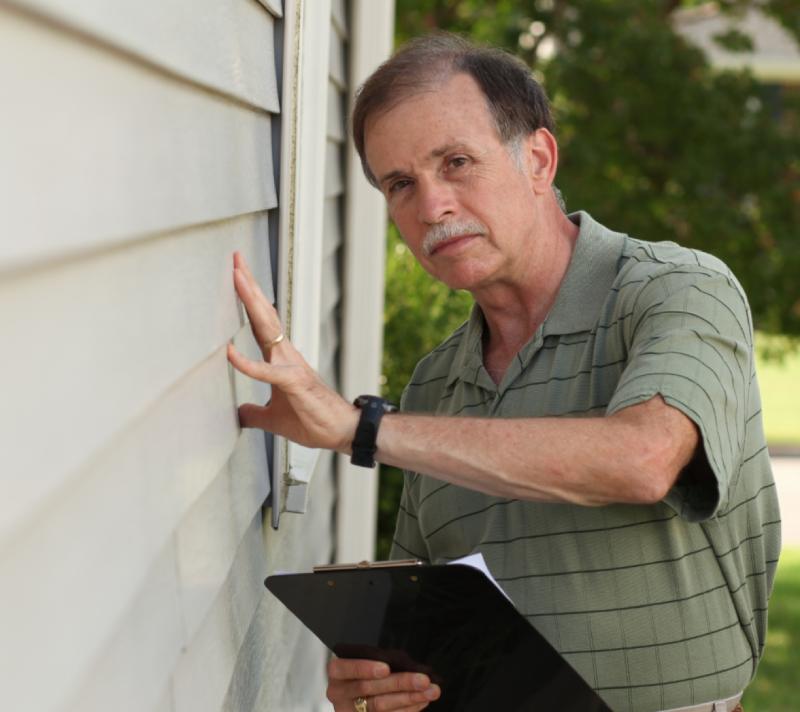
Siding's Protective Function
Siding not only enhances your home's curb appeal but also serves as a protective barrier against harsh weather. It insulates your home and protects it from moisture, pests, and temperature fluctuations. Good siding acts as a shield, preserving the integrity of your home's frame and contributing to energy efficiency by maintaining consistent indoor temperatures.
The aesthetic appeal of siding should not be underestimated. Quality siding can increase the value of your home, making it more attractive to potential buyers. However, its primary function is protection, and ensuring your siding is in good condition is essential for maintaining the overall health of your home.
When to Consider Siding Replacement
- Cracks or Holes: These can allow moisture and pests to enter your home. Even small cracks can lead to significant damage over time if not repaired.
- Warping or Bubbling: Indicates water damage and potential for mold growth. Warped siding can compromise the structural integrity of your home's exterior and should be addressed promptly.
- Faded or Peeling Paint: While more cosmetic, it can indicate the siding's protective layer is compromised. Peeling paint can expose the underlying material to the elements, accelerating deterioration.
Siding Replacement Options
When replacing siding, consider materials that offer durability and weather resistance, such as vinyl, fiber cement, or engineered wood. These materials are designed to withstand harsh weather conditions and provide long-lasting protection for your home. Vinyl siding is a popular choice due to its affordability and low maintenance requirements, while fiber cement offers excellent durability and resistance to fire and pests. Engineered wood provides a natural look with enhanced durability and weather resistance.
Selecting the right material for your siding replacement involves considering factors such as climate, budget, and personal preference. Consulting with a professional can help you choose the best option for your home, ensuring that your siding not only looks great but also provides the necessary protection.
Siding vs. Roof Repairs: Which Comes First?
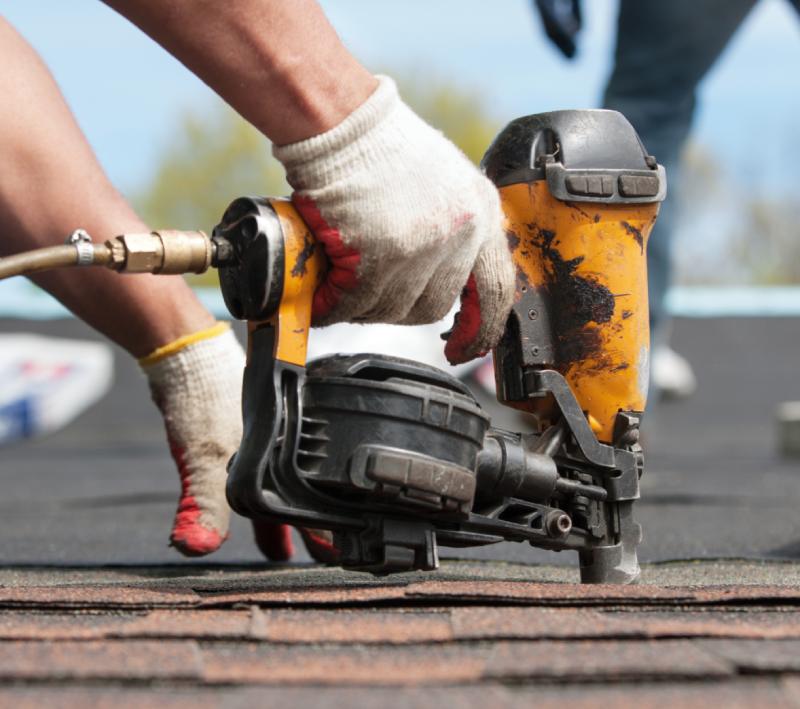
Prioritizing Based on Damage Severity
The decision between siding vs. roof repairs depends largely on the severity of the damage. If the roof is leaking or structurally compromised, it should take precedence. Roof issues can lead to interior damage, including mold growth and compromised insulation.
However, if both the roof and siding are equally damaged, consulting with a roofing contractor can provide clarity. They can assess the urgency of each repair and help you prioritize based on potential risks and costs.
In some cases, addressing both issues simultaneously might be the best course of action. A comprehensive approach can prevent small problems from escalating and ensure that your home is fully protected from future storms.
Cost and Budget Considerations
Budget constraints may also influence your decision. Roof repairs can be more costly, but addressing roof issues early can prevent more expensive problems later. Investing in roof repairs now can save you money in the long run by avoiding extensive interior damage and structural repairs.
Siding repairs might be more affordable, but ignoring them could lead to increased utility bills and interior damage. Proper insulation and protection provided by siding can significantly impact your home's energy efficiency, leading to savings on heating and cooling costs.
It's essential to weigh the costs and benefits of each repair option carefully. Consulting with contractors and reviewing your budget can help you make informed decisions that align with your financial situation and long-term home maintenance goals.
Working with Roofing Contractors
Choosing the Right Contractor
When selecting a contractor, consider these tips:
- Check Credentials: Ensure the contractor is licensed and insured. Proper credentials indicate professionalism and reliability.
- Read Reviews: Look for testimonials from other homeowners. Customer feedback can provide insight into the contractor's quality of work and customer service.
- Get Multiple Quotes: Compare prices and services offered. Multiple quotes allow you to evaluate your options and choose a contractor that offers the best value.
A reliable contractor can make a significant difference in the quality and longevity of your repairs. Take the time to research and select a contractor who meets your needs and expectations.
Questions to Ask
- What is the estimated timeline for repairs? Understanding the timeline can help you plan and manage your expectations.
- Are there warranties or guarantees on the work? Warranties provide peace of mind and protect your investment.
- What materials are recommended for my home? A knowledgeable contractor can recommend materials that suit your home’s specific needs and climate.
Asking the right questions can help you gauge the contractor's expertise and ensure that your repair project is in capable hands.
Conclusion
Deciding whether to prioritize siding or roof repairs after a Midwest storm can be challenging. By assessing the damage, understanding the importance of each repair, and consulting with professional roofing contractors, you can make informed decisions that protect your home and ensure its longevity. Remember to maintain regular upkeep to minimize future storm damage and safeguard your investment. Proactive maintenance and timely repairs can save you time, money, and stress in the long run, ensuring your home remains a safe and comfortable haven for years.
For expert siding and roofing services in the Clive area, contact our team at Universal Roofing and Construction today!
Choosing the Right Commercial Roofing System
Commercial roofing systems are available in a variety of materials and configurations, each offering distinct advantages and suited to specific applications. Making the right choice depends on understanding these differences and how they align with your business's requirements. From traditional options like Built-Up Roofing (BUR) to modern, eco-friendly solutions such as green roofing, the landscape of commercial roofing is diverse and evolving.
Built-Up Roofing (BUR)
Built-Up Roofing, commonly known as BUR, is one of the oldest and most reliable commercial roofing systems, celebrated for its robustness and long-standing performance. Comprising multiple layers of tar and gravel, BUR offers excellent waterproofing and is particularly effective on flat or low-sloped roofs. Its multilayered design not only enhances durability but also provides superior insulation, which can contribute to reducing energy costs over time.
BUR systems are known for their longevity, often lasting over 20 years with proper maintenance. They are well-suited for buildings that face harsh weather conditions as they can withstand heavy rains and winds. However, one of the trade-offs is the weight of the system, which requires a strong structural foundation to support it. This makes it crucial to assess your building’s load-bearing capacity before opting for a BUR system.
Modified Bitumen Roofing
Modified bitumen roofing is an advanced iteration of the traditional BUR system, designed for ease of installation and enhanced performance. It features layers of asphalt with plastic or rubber additives, providing increased flexibility and resilience against extreme weather conditions. This roofing system is often the go-to choice for roofs that endure heavy foot traffic due to its robustness and ability to resist wear and tear.
The flexibility of modified bitumen makes it suitable for a variety of climates, expanding and contracting without causing damage, which is particularly beneficial in areas with significant temperature fluctuations.
Single-Ply Membrane Roofing (TPO & EPDM)
Single-ply membrane roofing systems have gained popularity due to their lightweight, flexible nature, and ease of installation. These systems primarily consist of two types: TPO (Thermoplastic Polyolefin) and EPDM (Ethylene Propylene Diene Monomer). TPO is lauded for its energy efficiency, reflecting UV rays and thereby reducing cooling costs significantly. On the other hand, EPDM is renowned for its durability and exceptional resistance to UV damage, making it a reliable choice for various climates.
Both TPO and EPDM are straightforward to install and maintain, making them a cost-effective option for many businesses. They offer excellent resistance to chemicals and pollutants, which is advantageous for industrial environments.
Metal Roofing
Metal roofing is a versatile option, accommodating a wide range of commercial building designs. Available in materials such as steel, aluminum, and copper, metal roofs provide outstanding durability and can last upwards of 50 years with proper maintenance. They are highly resistant to weather elements, fire, and pests, making them a solid investment for any business looking to minimize long-term maintenance costs.
Beyond their practical benefits, metal roofs also offer aesthetic flexibility, available in various styles and colors to suit different architectural designs. They are particularly effective in areas prone to extreme weather, as they can withstand high winds and heavy snowfall.
Green Roofing
Green roofing systems are rapidly gaining popularity due to their environmental benefits and aesthetic appeal. These roofs incorporate layers of vegetation, providing natural insulation and reducing the building's overall heat absorption. By improving air quality and managing stormwater runoff, green roofs are an eco-friendly choice for businesses that prioritize sustainability and wish to reduce their carbon footprint.
Key Considerations When Choosing a Roofing System
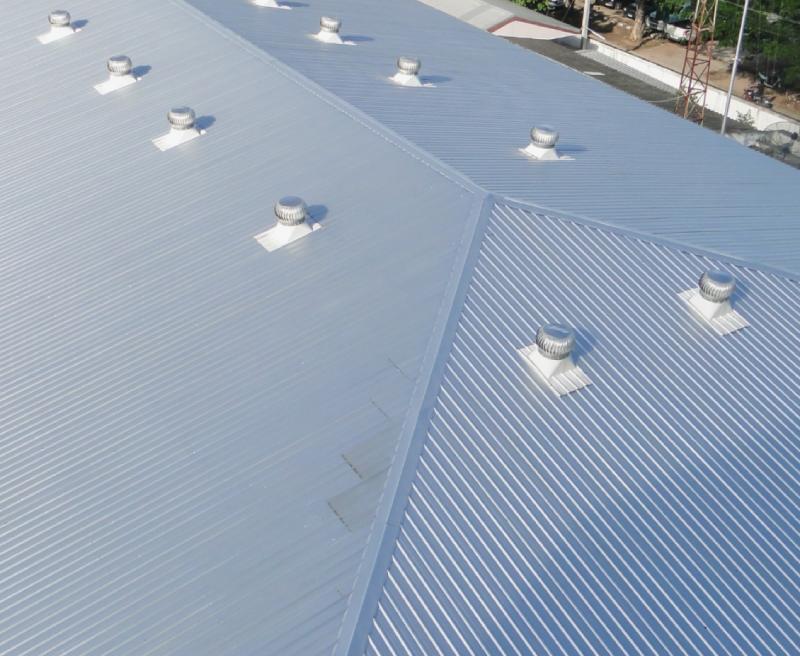
Selecting the right roofing system involves more than just picking a material that looks good or fits your budget. Several critical factors must be considered to ensure that the chosen system meets your business’s specific needs and long-term goals.
Climate and Environmental Factors
The local climate is one of the most influential factors in determining the best roofing material for your commercial building. For instance, metal roofs are excellent for areas with heavy snowfall due to their ability to shed snow easily, preventing accumulation and structural stress. Conversely, TPO roofing is ideal for regions with high temperatures, as it reflects sunlight, thereby reducing cooling costs and enhancing energy efficiency.
Understanding the local weather patterns helps in selecting a roofing material that offers optimal protection against environmental challenges. In areas prone to hurricanes or severe storms, a roofing system with high wind resistance is essential. Similarly, regions with frequent rainfall should prioritize materials with excellent waterproofing capabilities to prevent leaks and water damage.
Building Structure and Design
The architectural design and structural integrity of your building play a pivotal role in selecting a roofing system. Flat roofs are typically compatible with BUR or modified bitumen systems, while pitched roofs might benefit more from metal or single-ply membrane options.
Consideration of the building's design also involves aesthetic elements, as the roof should complement the overall appearance of the property. For example, green roofs can add a unique visual element to urban buildings, while metal roofs can enhance modern architectural styles. Ensuring the roof aligns with both functional and aesthetic aspects is key to making an informed choice.
Budget and Long-Term Value
Budget constraints often play a significant role in determining the most suitable roofing system for a commercial building. While some systems may have higher initial costs, they can offer substantial long-term savings through enhanced durability and energy efficiency. It's crucial to balance the upfront investment against potential maintenance and operational savings over the roof's lifespan.
The Importance of a Trusted Roofing Contractor
The expertise of the roofing contractor is as important as the material itself in ensuring a successful roofing project. A reputable contractor will guarantee proper installation, which is crucial to maximizing the lifespan and performance of the roof. It's advisable to seek a commercial roofing company with a proven track record in professional installations and a history of satisfied clients.
Before hiring, verify the contractor’s credentials, including licenses, insurance, and certifications. Request references and, if possible, visit previous projects to assess the quality of their work. A skilled contractor will also provide valuable guidance on material selection and maintenance practices, ensuring that your investment is well-protected.
What to Expect During the Installation Process
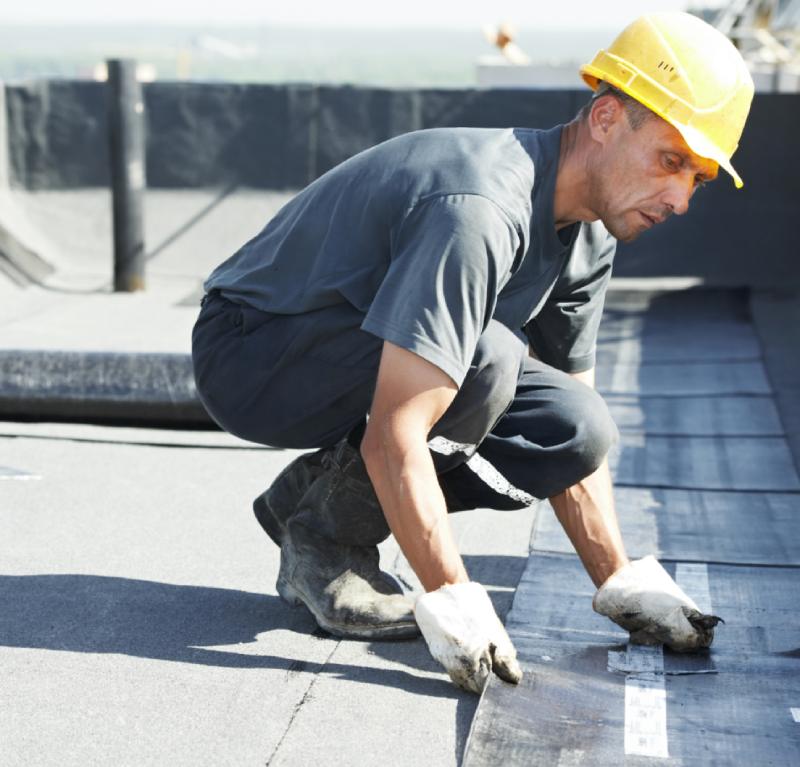
The installation process for commercial roofs can vary significantly depending on the type of system chosen. Understanding the general steps involved can help set expectations and ensure the project runs smoothly.
- Roof Inspection and Preparation: The initial phase involves a thorough inspection of the existing roof to identify any underlying issues that need addressing before installation.
- Installation: The process is tailored to the specific system—BUR layering, single-ply rolling and sealing, or precise panel work for metal roofs.
- Final Inspection: A detailed inspection ensures the roof meets all safety and performance standards.
Maintenance Tips for Longevity
Regular maintenance is critical to prolonging the life of your commercial roof and preventing expensive repairs. Implementing a consistent maintenance schedule can help identify and address issues before they escalate.
- Regular Inspections: At least twice a year (spring and fall) to catch seasonal damage.
- Clean Gutters and Drains: Prevent water buildup and structural issues.
- Address Repairs Promptly: Don’t delay necessary fixes.
- Hire Professional Maintenance Services: Ensure expert care and thorough upkeep.
Final Thoughts
Choosing the right commercial roofing system involves careful consideration of various factors, including material type, climate, building structure, and budget. By understanding the different roofing systems available and working with a reputable roofing contractor, you can ensure your business is protected by a durable and efficient roof. Regular maintenance and timely repairs will further extend the life of your roof, safeguarding your investment for years to come.
Remember, investing in the right commercial roofing system is not just about protecting your building; it's about enhancing its efficiency and value. Make an informed decision to secure your business's future, ensuring that your roofing choice reflects both your immediate needs and long-term goals. For expert commercial roofing services in the Montgomery area, contact our team at Universal Roofing and Construction today!
Is Your Roof Damaged by Storms or Just Old?
Determining whether your roof's condition is due to storm damage or simply age can be challenging. Roofs are exposed to various weather elements, from scorching sun to heavy rain and snow. These elements, over time, contribute to the gradual degradation of roofing materials, making them susceptible to damage. Hence, it's crucial to accurately assess the cause of any damage to determine whether a simple repair will suffice or if a complete replacement is necessary.
Understanding the distinction between storm-induced damage and age-related wear can guide you in making informed decisions about maintenance and repairs, ensuring your home remains protected from the elements.
Heavy Rain
Prolonged heavy rain can lead to water pooling on your roof, resulting in leaks or water damage. Water stains on your ceiling or walls and damp spots in your attic are signs of potential rain damage. In addition to visible signs, water can seep into the underlying layers of your roofing structure, causing unseen damage that may only become apparent over time. Addressing water intrusion promptly can prevent mold growth and preserve the integrity of your home's structure.
Fallen Debris
Storms can cause branches or other debris to fall onto your roof, leading to structural damage. Check for visible dents, cracks, or punctures in your roofing material after a storm. Large branches or debris can severely compromise the roof's structural integrity, necessitating immediate repair or replacement. Removing debris quickly and assessing the damage can prevent further deterioration and help maintain your roof's longevity.
Distinguishing Age-Related Roof Wear
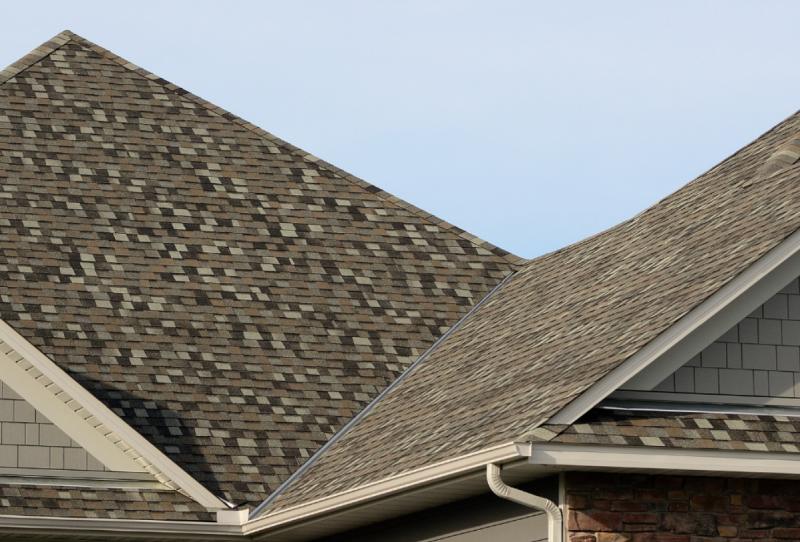
Unlike storm damage, age-related wear is a gradual process that occurs over time. Most roofs have a lifespan of 20 to 30 years, depending on the materials used. As your roof ages, it naturally loses its ability to protect your home effectively. Recognizing the signs of an aging roof can help you determine if it's time for a replacement. Regular maintenance and inspections can extend the lifespan of your roof, but eventually, all roofs will need to be replaced.
Understanding the signs of age-related wear ensures that you can plan for a replacement before serious problems develop.
Signs of an Aging Roof
Shingle Deterioration
Over time, shingles can become brittle, crack, or curl. If you notice these signs, it might indicate that your roof is nearing the end of its lifespan.
Additionally, if you find granules in your gutters, it could mean your shingles are deteriorating. The loss of granules not only affects the appearance of your roof but also its functionality, exposing the underlying materials to the elements.
Regularly cleaning your gutters and inspecting for granule loss can help you monitor the condition of your shingles.
Sagging Roof
A sagging roof is a clear indication of age-related wear. This issue often results from prolonged exposure to moisture, which weakens the underlying structure. If your roof is sagging, it's crucial to consult a roofing company for an assessment.
Sagging can also result from structural damage or inadequate support, making it a serious issue that requires immediate attention. Ensuring proper ventilation and addressing moisture issues can help prevent sagging and prolong the life of your roof.
Moss and Algae Growth
Moss and algae can grow on older roofs due to prolonged exposure to moisture. While these growths may not always cause immediate damage, they can trap moisture, leading to further deterioration. Regular cleaning and maintenance can help manage moss and algae growth, preserving your roof's appearance and functionality. In some cases, installing zinc or copper strips can prevent moss and algae from taking hold, providing an effective long-term solution.
Conducting a Storm Damage Assessment
To accurately determine the cause of your roof's condition, conducting a thorough storm damage roof repair assessment is essential. While some signs of damage are visible, others require professional evaluation. Here's how you can go about it:
Inspect the Exterior
Start by inspecting the exterior of your roof. Look for missing, damaged, or lifted shingles. Check for signs of debris impact and examine your gutters for granule buildup. If you have a safe way to access your roof, you might also want to inspect the surface for dents or cracks.
Taking photos during your inspection can help you document damage for insurance purposes and provide a reference for professionals. Remember, safety is paramount, so only inspect your roof if you can do so safely.
Assess the Interior
Next, move indoors and check your attic for signs of leaks or water damage. Look for water stains on your ceiling and walls, as well as any damp areas or mold growth. These signs can indicate roof damage that needs immediate attention.
Conducting regular roof inspections can help you catch leaks early, preventing more extensive water damage and mold growth. Using a flashlight can help you spot subtle signs of damage that might otherwise go unnoticed.
Professional Evaluation
For a thorough assessment, consider hiring a professional roofing contractor. A roofing company can provide a detailed storm damage report, identifying both visible and hidden issues. Professionals have the experience and tools to assess the extent of the damage accurately and recommend the best course of action.
An expert evaluation can also help you navigate insurance claims, ensuring you receive the coverage you're entitled to. Regular professional assessments can catch potential issues before they become major problems, saving you time and money in the long run.
Conclusion
Distinguishing between storm damage and age-related wear on your roof is essential for deciding the best course of action. While some signs are easy to spot, others require a professional assessment. By understanding the differences and conducting a thorough inspection, you can ensure your roof receives the care it needs.
Whether you opt for a repair or replacement, choosing a reliable roofing company will provide peace of mind and protect your home for years to come. Regular maintenance and proactive inspections can extend the life of your roof, safeguarding your investment and maintaining the value of your property. For expert services in Nashville, contact our roof repair company, Universal Roofing and Construction, today!


